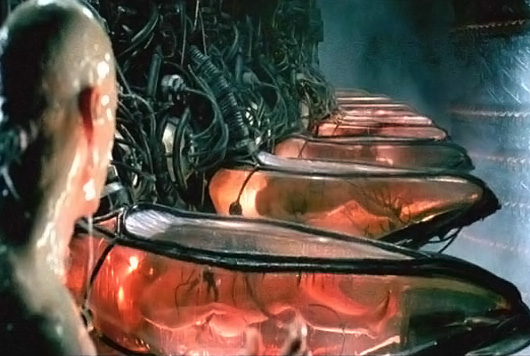The Inner Space Race
Fifty years after the Apollo 11 moon landing, we’re amidst another space race: The Inner Space Race. This emerging rivalry pits individuals against the attempts of Artificial Intelligence and other tech to know and manipulate our cognitive, emotional and psychological “intrastructure”.
AI-powered social networks, content and other tools construct a powerful persuasion architecture. While largely used to influence our purchases, such networks are also being used by state and non-state actors to sway elections and instigate ethnic violence. Algorithms and machine learning do this by deeply learning about our wants and vulnerabilities. They provoke our emotions. They exploit our social instincts and conditioning. Some term them WMDs: Weapons of Mass Distraction. The Center For Humane Technology calls it “a race to the bottom of the brainstem”. While their proposed solutions focus on government regulation and industry evangelism, we also need to run this race at the individual level.
Apollo’s original—and lasting—message
It wasn’t until the 1960s that the Moon was the place most associated with the word Apollo. For 3500 years, it was instead an ancient Greek city on the slopes of Mount Parnassus: Delphi. The Temple of Apollo there housed the Oracle of Delphi. Famous throughout the ancient world, both real and mythical heroes traveled there. The priestess delivered messages from the god Apollo. Such messages were usually cryptic or obscure, and directed at the particular advice seeker. One counsel, the most famous, however, was unambiguous, universal, and engraved on the temple: Gnōthi Seauton or “Know Thyself”.
Modern-day myths.
Much like ancient heroes, In The Matrix movie franchise, the circa-2000 protagonist Neo also consults “The Oracle”. She directs him to the wood engraving above her kitchen entrance: the Latin version of Know Thyself, Temet Nosce. The Sci-fi genre is the closest we have to modern-day myth: it conveys some essential truths via contrived, even fanciful situations. Its creators channel our collective apprehensions about both present and future. Between Star Trek’s Borg absorbing individuals into a collective consciousness and Terminator’s androids exterminating the human race fits The Matrix warning: Humans are unknowingly enslaved to generate electricity that powers the software of the world.

We do that now, albeit, still figuratively: We buy. We train algorithms. We enable deep learning. Big data harvests our actions and decisions. Algorithms on YouTube and other online platforms bring us deeper into matrices: ideological bubbles and echo chambers.
When bits bite (byte?) back – or, how we got here
Once upon a ITime, there was an Information Economy, as it was dubbed. Google’s mission to “Organize the world’s information” exemplified this.
Yet, economics is the study of scarcity: land, capital… So, how can the field deal with information, which now expands at exponential rates? As more eyeballs came online to chase ever-expanding collections of bits, technologists found ways to monetize those eyeballs: email newsletters and spam, social media platforms, clickbait, 24-hour news channels with perpetual “breaking news”, memes, an outrage culture… The costs of getting our attention have plummeted. The ability to target, micro-target—and do so at scale has increased.
An Attention Economy has both evolved and become a more apt descriptor. Attention is fixed. Everyone tops out at 24 hours a day—assuming zero sleep. When we forsake sleep to attend to something, the quality of that attention deteriorates. Similarly, quality plummets when we divide our attention, such as watching TV while using social media. Yet, innovators are finding ways to grab—and monetize—more crumbs of our attention. Screens in stores, offices and transportation, even on gas pumps capture our few dozen seconds while we fill up. Of course, we have our phones perpetually with us.
Along with ubiquitous screens to capture our attention, come a Panopticon of cameras to capture our actions. Pared with rules that decide which scofflaws to prosecute, we may be entering an Algocracy: rule by algorithm. While The West’s “nudging” regulations, cameras issuing speeding tickets and setting rules for self-driving cars may seem modest, China’s social credit score system will take this much further.
Augmented and Virtual Reality give us additional tools to interact with the world of bits—but interaction is a two-way street. We’re giving AI access to our inner ear and the pit of our stomach, giving it reams of data on what puts us off balance and how to induce nausea. Elon Musk’s Neuralink or other brain–computer interface provides even deeper access into the mind.
Beyond code run on silicon, there are many technologies attempting to “reengineer the world inside ourselves without really understanding it,” as historian/futurist Yuval Harari puts it. For example, genetic engineering can rewrite the code of our DNA. This is fraught with peril. Self knowledge should precede self control.
Data access and privacy aren’t the issues—especially when we’re aware of them. Rather, it’s that increasingly machines know things about us that we don’t even know about ourselves. Most worrisome is the ignorance that we’re being manipulated. When you wear scars from whips and chains you know you’re enslaved. When the control is much subtler, we’re like the podded humans in The Matrix.

The Emerging Awareness Industry
The solution is in that Delphic maxim: Know thyself. Technology—old and new—has a role on the human side as well. The Quantified Self Movement, through a variety of analog and digital trackers, promises “self knowledge through numbers”. Apps take ancient decades-long practices, like meditation, and chop it into 5-minute chunks. Meditation alone is a $1 Billion industry in the US alone. It’s part of Mindfulness sector, the fastest growing segment of the Wellness industry ($4.3Trillion, worldwide). Outside the formal Health sector, Wellness includes social and community, mental, emotional, spiritual, and financial awareness. While we tend to think of apps and gadgets as tech, meditation is a technology as well — one that can, eventually, defrag our brain. (It starts by showing us just how fragmented our consciousness really is.) Other ancient codes making a resurgence include yoga, fasting, and journaling. Renewed interest in Stoicism, Daoism, Kabbalah, Sufism, and other often esoteric practices of East and West show something new. I term this an emerging “(self) awareness industry”. And it could counter threats of algocracy. This sector lies at the nexus of several fractured industries with fluid borders. This includes not only the above, but the self help genre($12B in US), life coaching (>$1B in US), workplace personality testing ($2B), and at least parts of other industries including mental health, education, and arguably religion.
It Ain’t Rocket Science.
By some calculations, there are more possible human DNA combinations than there are atoms in the known universe. And that’s just nature. if you add in nurture (the epigenetic and environmental factors) and you get even more variation. The depths of Inner Space is vast. We’ll need technologies both ancient and cutting edge to plumb such depths.
Comparedly, rocket science is easy. Based upon Euclidean geometry and Newtonian physics, rather simple engineering got us to the moon. Hell, you can go to schools dedicated to rocket science.
My Moonshot in the Inner Space Race
How do we serve the have-nots in an Attention Economy? Of course there are the 1% who will study, meditate and build antifragile self-awareness programs. But what about the time impoverished? The 99% of us who have 21st Century attention spans. They’re unlikely to read much philosophy. The post-literate need visuals. Like the pre-literate, they’ll learn from story-telling. It’s to this audience I direct FARM™, my moon shot in the Inner Space Race.
From my early work advising business school applicants , “wantrepreneurs”, and other career changers, FARM™ has evolved. It addresses broad markets and applications. Its acronym, and its meaning-centered framework, and approach to cultivating self knowledge is based on an agricultural allegory (see: https://farm.fyi.)
FARM™ is an operating system of sorts but for people. Like Macintosh & Windows OS, it replaces text-based interfaces. Though instead of the GUI metaphor of the desktop, it uses agriculture; instead of iconography of files, folders, and calculator, it uses fields, seeds and chores; instead of cutting & pasting and trashing documents, you tend and harvest crops.
FARM™ pairs Artificial Intelligence with Natural Intelligence. AI’s pattern of humans programming machines and now machines increasingly programming humans is not unique. The Agricultural Revolution began when humans domesticated animals, plants–and ultimately themselves. Humans genetically (re)coded species, which in turn programmed us to spread their genes far and wide. Additional code (written languages, government and legal code, religions and other complex belief systems) was layered upon those first agrarian-based societies.
FARM™ takes the latest 3000+ years of that legacy code & adapts (compiles, decomposes, rewrites, refactors, removes obfuscation…) it for 21st Century attention spans. FARM™ code can be ported onto various analog & digital products.
One small step for man, woman and child is to know him or herself (better). This helps ensure mankind steps forward into the future in charge of its own destiny. FARM™ exists to assist that journey.
